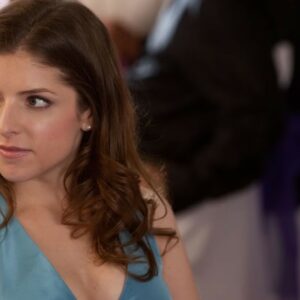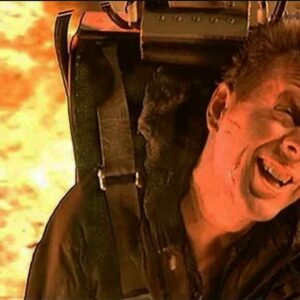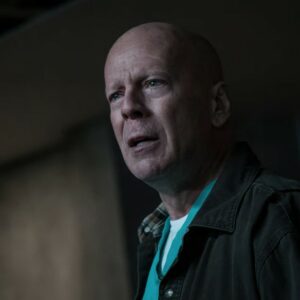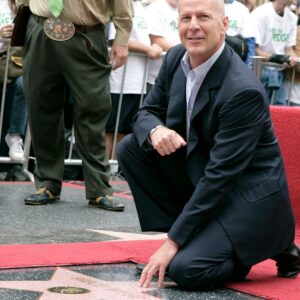Introduction
Ryan Gosling stands out as one of Hollywood’s most enigmatic talents, known not only for his striking looks but for his ability to breathe life into characters that linger in the gray areas of morality. In an era where heroes no longer adhere to clear-cut definitions of right and wrong, Gosling has carved a niche with his portrayals of anti-heroes—flawed, introspective figures grappling with their inner demons. These roles have allowed him to captivate audiences, not by embodying traditional notions of heroism, but by exploring the vulnerabilities, contradictions, and complexities that define the human experience.
As we delve deeper into Gosling’s career, we uncover a fascinating trajectory that has seen him transition from the romantic heartthrob of The Notebook to the brooding anti-hero of films like Drive and Blade Runner 2049. This article takes a closer look at how Gosling has embraced these morally ambiguous characters, creating a body of work that reflects the complexities of modern life and resonates deeply with viewers seeking narratives that reflect their own imperfect realities.
The Appeal of the Anti-Hero
The rise of the anti-hero in contemporary cinema is a response to an evolving audience—one that craves complexity over simplicity, ambiguity over clarity. Traditional heroes, with their steadfast commitment to righteousness, have given way to characters whose moral compasses are less defined. Anti-heroes operate in a space where ethics are murky, and decisions are driven by personal motivations rather than universal ideals.
Gosling’s anti-heroes resonate because they feel human. They make mistakes, often tread dangerous paths, and grapple with their darker impulses. In a world where the lines between good and evil are increasingly blurred, these characters offer a reflection of our own struggles with identity, morality, and purpose.
Take, for instance, his role in Drive. The Driver is not your typical hero; he’s a man of few words, existing in a shadowy world where violence is a means of survival. Yet, there’s a vulnerability beneath the stoic exterior—a sense of honor and protection that drives his actions. Gosling’s portrayal of the Driver is hauntingly understated, allowing audiences to project their own interpretations onto the character. It’s this ambiguity that makes the performance so compelling. The Driver operates by his own code, one that doesn’t necessarily align with conventional notions of good and evil, but one that feels true to his character’s reality.
Ryan Gosling’s Pioneering Roles in Anti-Heroism
Gosling’s venture into anti-hero territory began to take shape with Blue Valentine (2010), where he portrayed Dean, a man grappling with the dissolution of his marriage. Dean is not a villain; he’s simply a flawed individual whose inability to navigate the complexities of love and commitment leads to his relationship’s downfall. This role marked a departure from the idealized characters often seen in romantic dramas, positioning Gosling as an actor unafraid to explore the darker sides of love and human connection.
But it was Drive (2011) that truly solidified Gosling as a master of the anti-hero genre. As the mysterious, unnamed Driver, Gosling exudes a quiet intensity that belies the violence simmering beneath the surface. The character is a study in contrasts—both protector and predator, hero and villain. Gosling’s performance is a masterclass in restraint, conveying emotion through subtle gestures rather than words. The Driver’s actions may be brutal, but they are driven by a code of honor, albeit one that exists outside the boundaries of conventional morality.
In The Place Beyond the Pines (2012), Gosling took on another complex role as Luke Glanton, a motorcycle stuntman turned bank robber. Luke is a character defined by desperation—his criminal actions stem from a desire to provide for his child, even as they lead him down a path of destruction. Gosling imbues Luke with a sense of tragic inevitability; he is a man trapped by his circumstances, making choices that are as much a product of his environment as they are of his own flaws. Once again, Gosling plays a character who straddles the line between hero and villain, forcing audiences to grapple with the moral ambiguity of his actions.
The Quiet Intensity of Gosling’s Anti-Heroes
One of the hallmarks of Gosling’s anti-hero performances is his ability to convey deep emotion with minimal dialogue. His characters often speak more with their eyes, body language, and silences than with words. This quiet intensity has become a defining feature of his work, drawing audiences into the inner worlds of his characters.
In Blade Runner 2049 (2017), Gosling plays K, a replicant who embarks on a journey of self-discovery in a dystopian future. K’s quest to understand his own identity and purpose mirrors the broader existential questions that define the anti-hero archetype. Is he more than just a machine? Can he transcend his programming to become something more? Gosling’s performance is restrained, yet deeply affecting—he captures the loneliness and yearning of a character searching for meaning in a world where morality is as artificial as the replicants themselves.
The subtlety of Gosling’s performance in Blade Runner 2049 is a testament to his skill as an actor. He doesn’t rely on grand gestures or dramatic monologues to convey K’s internal struggle; instead, he lets the audience in through small moments of vulnerability—a glance, a pause, a slight shift in expression. This minimalist approach is what makes Gosling’s anti-heroes so compelling—they feel real because they don’t try to explain themselves. They simply exist, flawed and conflicted, much like the rest of us.
Why Audiences Connect with Gosling’s Anti-Heroes
Gosling’s anti-heroes resonate with audiences because they reflect the complexities of real life. Traditional heroes often operate within a clear moral framework, but life is rarely that simple. Gosling’s characters are constantly grappling with difficult choices, making decisions that are neither purely good nor purely evil. This nuanced approach to character development allows viewers to see themselves in his roles—imperfect, striving, and often caught in situations with no easy answers.
In Blue Valentine, Dean’s struggle to keep his marriage intact is one that many can relate to. He’s not a villain, nor is he a perfect partner. He’s simply a man trying to navigate the complexities of love and life, making mistakes along the way. It’s this relatability that makes Dean such a compelling character—he’s someone we can understand, even if we don’t always agree with his choices.
Similarly, in Drive, the Driver’s moral code may not align with society’s, but it’s one that makes sense within the context of his world. He operates in a space where violence is a necessary evil, and his actions, though brutal, are driven by a desire to protect those he cares about. Gosling’s portrayal of the Driver allows audiences to empathize with a character who exists in a moral gray area—he may not be a hero in the traditional sense, but he’s someone we can root for nonetheless.
Conclusion
Ryan Gosling has redefined what it means to be a leading man in Hollywood by embracing the complexities of the anti-hero. His portrayals of morally ambiguous characters resonate with modern audiences who crave stories that reflect the intricacies of real life. Whether as a silent getaway driver, a conflicted replicant, or a desperate father, Gosling’s anti-heroes challenge our perceptions of morality and heroism, reminding us that the lines between right and wrong are often blurred.
Through his nuanced performances, Gosling continues to push the boundaries of what it means to be a hero on screen. He doesn’t shy away from the darker aspects of the human experience; instead, he embraces them, creating characters that are as flawed and complex as the world they inhabit. As audiences continue to seek out stories with moral complexity, Gosling’s anti-heroes will remain some of the most compelling figures in contemporary cinema—characters who remind us that true heroism lies not in perfection, but in the struggle to navigate an imperfect world.
In the end, Gosling’s charm doesn’t come from his ability to play flawless heroes, but from his willingness to explore the flaws that make us human. Through his performances, he offers a mirror to our own imperfections, inviting us to see the beauty in the complexity of the human condition. And that, perhaps, is the greatest heroism of all.





